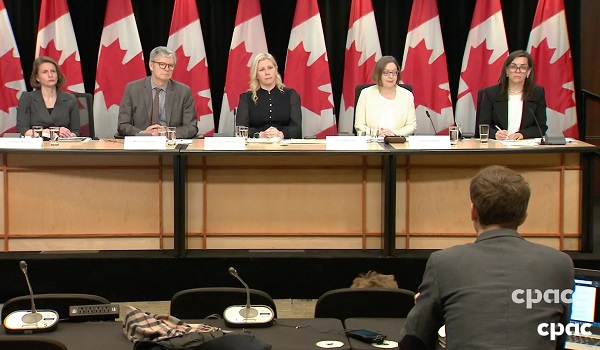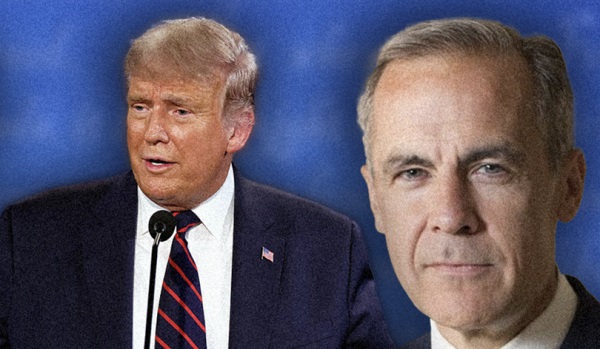Economy
Energy transition will be much longer and more arduous than they’re telling you

From the Fraser Institute
While many Canadian politicians and activists continue to trumpet the “energy transition” and conjure visions of a low-carbon future that supposedly lurks just around the corner, along comes Natural Resources Canada with its latest Energy Fact Book. A careful review of the publication pours cold water on any notion of a rapid shift to a fundamentally different energy system, one that features a much smaller role for the fossil fuels that now supply the vast majority of the energy used by Canadians.
The book contains a wealth of information on Canada’s large and notably diverse energy sector, covering production, consumption trends, investment, and the environmental impact of energy production and use. Separately, Natural Resources Canada also publishes “energy profiles” for the individual provinces and territories that provide further insight into energy production and consumption patterns across the country.
Starting with energy production (and considering all sources of energy, including uranium), crude oil accounts for about 45 per cent of Canadian energy output, measured in petajoules. Natural gas and natural gas liquids comprise another 32 per cent, with uranium chipping in 11 per cent of primary energy production. Smaller shares come from coal (5 per cent), hydroelectricity (5 per cent) and “other” renewables (3 per cent).
The statistics on energy output confirm that fossil fuels dominate the mix of energy sources produced in Canada. There’s little reason to believe this will change in a significant way in the near term.
Turning to energy consumption, a review of the most recent information leads to a broadly similar conclusion.
Based on Statistics Canada’s latest data, industry, collectively, is responsible for about 35 per cent of final end-use energy demand; this category includes manufacturing, natural resource extraction and processing, and construction. Transportation is the second-largest consumer of energy (29 per cent of final demand), followed by the residential (16 per cent) and commercial sectors (14 per cent).
What about the various sources of energy Canadians depend on for their comfort and well-being and to enable industrial and other business activity? Refined petroleum products rank first, providing about two-fifths of all energy consumed. Natural gas is second (35-36 per cent). Electricity comprises just 16-17 per cent of the energy used in Canada. Overall, fossil fuels still meet more than three quarters of Canadians’ requirements for primary energy.
Some may be surprised that electricity constitutes less than one-fifth of the energy used in Canada. A principal strategy of governments aspiring to slash greenhouse gas emissions is to redirect energy demand to electricity and away from oil, natural gas and other carbon-based energy sources. That makes sense, particularly since Canada’s existing electricity grid is about 80 per cent carbon-free. But a “big switch” to electricity won’t be easy. Consider that, over the first two decades of the millennium, Canadian natural gas consumption jumped by 34 per cent while electricity demand rose by 12 per cent. This underscores the resiliency of household and business demand for reliable affordable energy—of which natural gas is the best example.
Raising electricity’s share of total energy consumption will necessitate an enormous expansion across all segments of the Canadian electricity sector, encompassing not only the development of far more generation capacity but also the construction of additional transmission networks to deliver electric energy to end-users. Industry experts talk of boosting the amount of electricity produced in Canada by up to three times within two decades—a herculean task, assuming it’s even possible.
And, in line with the “net zero” goals espoused by many governments, virtually all of new electricity presumably must come from carbon-free sources (e.g., hydropower, other renewables, biomass, nuclear). There’s also the challenge of replacing the remaining carbon-based electricity still produced in Canada with carbon-free alternatives, as mandated by the Clean Electricity Regulations (CER) recently adopted by the Trudeau government.
Suffice to say the transition away from fossil fuels as the predominant source of energy consumed in Canada will be a lengthy and arduous journey and is sure to encounter more and bigger obstacles than most of Canada’s political class understands or cares to acknowledge.
Author
Business
Saskatchewan becomes first Canadian province to fully eliminate carbon tax

From LifeSiteNews
Saskatchewan has become the first Canadian province to free itself entirely of the carbon tax.
On March 27, Saskatchewan Premier Scott Moe announced the removal of the provincial industrial carbon tax beginning April 1, boosting the province’s industry and making Saskatchewan the first carbon tax free province.
Under Moe’s direction, Saskatchewan has dropped the industrial carbon tax which he says will allow Saskatchewan to thrive under a “tariff environment.”
“I would hope that all of the parties running in the federal election would agree with those objectives and allow the provinces to regulate in this area without imposing the federal backstop,” he continued.
The removal of the tax is estimated to save Saskatchewan residents up to 18 cents a liter in gas prices.
The removal of the tax will take place on April 1, the same day the consumer carbon tax will reduce to 0 percent under Prime Minister Mark Carney’s direction. Notably, Carney did not scrap the carbon tax legislation: he just reduced its current rate to zero. This means it could come back at any time.
Furthermore, while Carney has dropped the consumer carbon tax, he has previously revealed that he wishes to implement a corporation carbon tax, the effects of which many argued would trickle down to all Canadians.
The Saskatchewan Association of Rural Municipalities (SARM) celebrated Moe’s move, noting that the carbon tax was especially difficult on farmers.
“I think the carbon tax has been in place for approximately six years now coming up in April and the cost keeps going up every year,” SARM president Bill Huber said.
“It puts our farming community and our business people in rural municipalities at a competitive disadvantage, having to pay this and compete on the world stage,” he continued.
“We’ve got a carbon tax on power — and that’s going to be gone now — and propane and natural gas and we use them more and more every year, with grain drying and different things in our farming operations,” he explained.
“I know most producers that have grain drying systems have three-phase power. If they haven’t got natural gas, they have propane to fire those dryers. And that cost goes on and on at a high level, and it’s made us more noncompetitive on a world stage,” Huber decalred.
The carbon tax is wildly unpopular and blamed for the rising cost of living throughout Canada. Currently, Canadians living in provinces under the federal carbon pricing scheme pay $80 per tonne.
2025 Federal Election
Fight against carbon taxes not over yet

As the federal government removes the consumer carbon tax, the Canadian Taxpayers Federation is calling on all party leaders to oppose all carbon taxes, including the hidden tax on business.
“Canadians fought hard to force Ottawa to back down on its consumer carbon tax and now the fight moves to stopping the hidden carbon tax on business,” said Franco Terrazzano, CTF Federal Director. “Canadians can’t afford a carbon tax on business that pushes up prices at the gas station and makes it harder for our businesses to compete while they’re already struggling with a trade war.”
Today, the federal government cut the consumer carbon tax rate to $0. This will reduce taxes by about 17 cents per litre of gasoline, 21 cents per litre of diesel and 15 cents per cubic metre of natural gas.
The federal government still imposes an industrial carbon tax on oil and gas, steel and fertilizer businesses, among others.
During the Liberal Party leadership race, Prime Minister Mark Carney said he would “improve and tighten” the industrial carbon tax and “extend the framework to 2035.”
Just 12 per cent of Canadians believe businesses pay most of the cost of the industrial carbon tax, according to a Leger poll commissioned by the CTF. Meanwhile, 70 per cent said businesses would pass most or some carbon tax costs on to consumers.
Conservative Party Leader Pierre Poilievre said he will “repeal the entire carbon tax law, including the tax on Canadian businesses and industries.”
“Carbon taxes on refineries make gas more expensive, carbon taxes on utilities make home heating more expensive and carbon taxes on fertilizer plants increase costs for farmers and that makes groceries more expensive,” Terrazzano said. “Canadians know Poilievre will end all carbon taxes and Canadians know Carney’s carbon tax costs won’t be zero.
“Carney owes Canadians a clear answer: How much will your carbon tax cost?”
-

 2025 Federal Election2 days ago
2025 Federal Election2 days agoFixing Canada’s immigration system should be next government’s top priority
-

 2025 Federal Election2 days ago
2025 Federal Election2 days agoChina Election Interference – Parties Received Security Briefing Days Ago as SITE Monitors Threats to Conservative Candidate Joe Tay
-

 2025 Federal Election1 day ago
2025 Federal Election1 day agoLondon-Based Human Rights Group Urges RCMP to Investigate Liberal MP for Possible Counselling of Kidnapping
-

 2025 Federal Election2 days ago
2025 Federal Election2 days agoJoe Tay Says He Contacted RCMP for Protection, Demands Carney Fire MP Over “Bounty” Remark
-

 2025 Federal Election2 days ago
2025 Federal Election2 days agoHong Kong-Canadian Groups Demand PM Carney Drop Liberal Candidate Over “Bounty” Remark Supporting CCP Repression
-

 2025 Federal Election2 days ago
2025 Federal Election2 days agoBeijing’s Echo Chamber in Parliament: Part 2 – Still No Action from Carney
-

 2025 Federal Election1 day ago
2025 Federal Election1 day agoRCMP Confirms It Is ‘Looking Into’ Alleged Foreign Threat Following Liberal Candidate Paul Chiang Comments
-

 2025 Federal Election18 hours ago
2025 Federal Election18 hours agoPM Carney’s Candidate Paul Chiang Steps Down After RCMP Confirms Probe Into “Bounty” Comments





